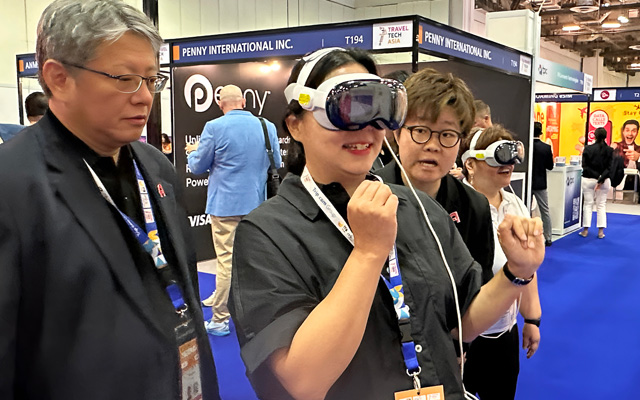Imagine walking towards a dinosaur, its head tracking your every move with a level of realism that outshines any VR (virtual reality) or AR (augmented reality) demo. The lingering question: can immersive mixed reality (XR) experiences like this drive visits and bring genuine value to tourist attractions and destinations?
AStation, which made its global debut at ITB Asia last week, offers a compelling case study. Its Enterverse technology transforms outdoor spaces into interactive XR playgrounds.

On the ground, creative development director Sion Yang explained how the company’s approach differs from traditional XR setups: “The biggest benefit is that it lets us add new information to heritage or protected sites, places where you can’t physically renovate or modify the environment, like Forbidden City (in Beijing, China) or Wugong Mountain (in Jiangxi, China).
“You can (instead) overlay digital content on top of what already exists.”
He added that, unlike location-based XR or location-based entertainment, “ours doesn’t need a huge physical space to operate”.
The optimal setup is a space of seven by 14 metres.
CEO Chris Chen highlights the use case in a press release: “Tourism needs AStation because destinations worldwide are searching for innovative ways to engage visitors and differentiate themselves.”
For tour operators, the benefits are clear. Immersive XR can elevate engagement at sites that would otherwise remain static, without major physical interventions.
The caveats? Investment in technology, equipment upkeep, and the constant need to keep experiences fresh for repeat visitors.
Still, as Yang noted, the goal is not to replace real-world exploration. The technology allows attractions to become “higher-density information hubs” that make trips more engaging.











